The Traitor is a 1936 German film directed by Karl Ritter. The film revolves around foreign agents who infiltrate the German arms industry, helped by German traitors. However, they are defeated due to the combined efforts of the Wehrmacht and the Gestapo.
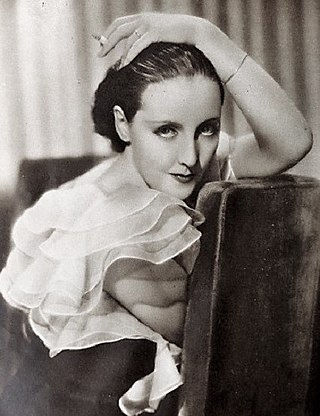
Dorothea Wieck, born Dora Bertha Olavia Wieck, was a German theatre and film actress.

A German Robinson Crusoe is a 1940 German drama film directed by Arnold Fanck and starring Herbert A.E. Böhme, Marieluise Claudius, and Claus Clausen. Written by Arnold Fanck and Rolf Meyer, the film is a modern-day Robinson Crusoe story about a man so angry about the post-World War I conditions in Weimar Germany that he voluntarily goes to live on a desert island. The film was shot partly on location in South America.
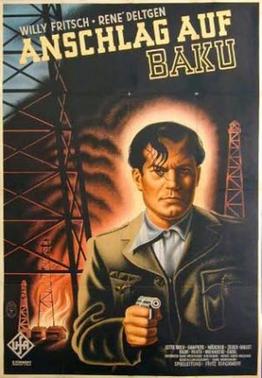
Attack on Baku is a 1942 German thriller film directed by Fritz Kirchhoff and starring Willy Fritsch, René Deltgen, and Fritz Kampers. The film was intended as anti-British propaganda during the Second World War. It is noted for its set designs by Otto Hunte, who showed a fascination for modern technology in his depiction of the oil town. The film was shot on location in German-allied Romania, and at Babelsberg Studio in Berlin.

Above All Else in the World is a 1941 German drama film directed by Karl Ritter and starring Paul Hartmann, Hannes Stelzer and Fritz Kampers. The title refers to the second line of the German national anthem. It was made as a propaganda film designed to promote Nazi Germany's war aims in the Second World War.

Riding for Germany is a 1941 German drama film directed by Arthur Maria Rabenalt and starring Willy Birgel, Gertrud Eysoldt and Gerhild Weber. A German cavalry officer, badly injured during the First World War, emerges as a leading competitor in post-war equestrian events.
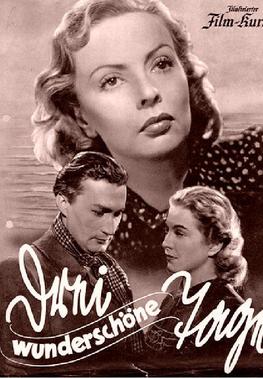
Three Wonderful Days is a 1939 German drama film directed by Fritz Kirchhoff and starring Gustav Waldau, Gina Falckenberg and Hans Zesch-Ballot.
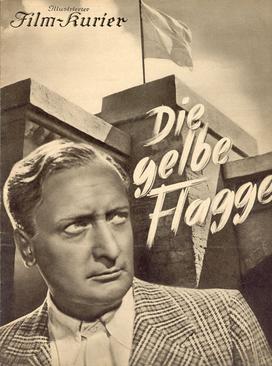
The Yellow Flag is a 1937 German drama film directed by Gerhard Lamprecht and starring Hans Albers, Olga Chekhova and Dorothea Wieck. It was shot at the Babelsberg Studios in Berlin. The film's sets were designed by the art director Ludwig Reiber. Location filming took place in Yugoslavia.
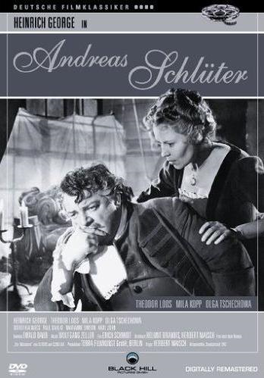
Andreas Schlüter is a 1942 German historical drama film directed by Herbert Maisch and starring Heinrich George, Mila Kopp and Olga Chekhova. It portrays the life of the 18th-century German architect Andreas Schlüter. It was shot at the Babelsberg Studios and Althoff Studios in Berlin. The film's sets were designed by the art directors Hermann Asmus, Kurt Herlth and Robert Herlth.
The Man in the Saddle is a 1945 German film directed by and starring Harry Piel.

Anna and Elizabeth is a 1933 German drama film directed by Frank Wisbar and starring Dorothea Wieck, Hertha Thiele and Mathias Wieman. The film reunited Wieck and Thiele who had starred in Mädchen in Uniform together two years earlier.

Freight from Baltimore is a 1938 German drama film directed by Hans Hinrich and starring Hilde Weissner, Attila Hörbiger, and Hans Zesch-Ballot. Interiors were shot at the Tempelhof Studios in Berlin. The film's sets were designed by the art directors Carl Böhm and Erich Czerwonski. It was partly shot on location at the Port of Hamburg.
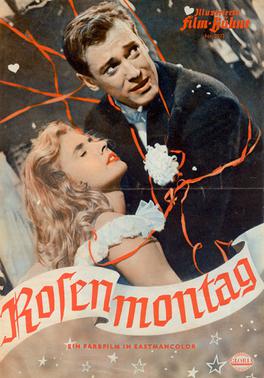
Love's Carnival is a 1955 West German historical drama film directed by Willy Birgel and starring Ruth Niehaus, Dietmar Schönherr and Elma Karlowa. It was shot at the Wiesbaden Studios and on location in Baden-Baden and Rastatt. The film's sets were designed by the art directors Fritz Maurischat and Theo Zwierski.

The Czar's Courier is a 1936 German historical drama film directed by Richard Eichberg and starring Anton Walbrook, Lucie Höflich, and Maria Andergast. It is an adaptation of Jules Verne's 1876 novel Michael Strogoff.
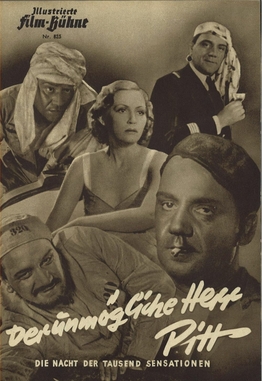
The Impossible Mister Pitt is a 1938 German adventure crime film directed by and starring Harry Piel. It also features Willi Schur, Leopold von Ledebur and Hilde Weissner. It was shot at the Babelsberg Studios in Berlin and on location off the coast of Split in Croatia. The film's sets were designed by the art directors Otto Erdmann and Hans Sohnle. It was based on the novel of the same title by Georg Mühlen-Schulte who also worked on the screenplay.

A Man Astray is a 1940 German comedy adventure film directed by Herbert Selpin and starring Hans Albers, Charlotte Thiele and Hilde Weissner. The film is an adaptation of the 1938 novel Percy auf Abwegen by Hans Zehrer. It was shot at the Halensee Studios in Berlin and the Bavaria Studios in Munich. Location shooting took place around Lake Starnberg in Bavaria. The film's sets were designed by the art directors Paul Markwitz and Fritz Maurischat. A financial success, it was produced and distributed by Tobis Film, one of Nazi Germany's leading film companies.

Police Report is a 1939 German crime thriller film directed by Rudolf van der Noss and starring Lola Müthel, Hans Zesch-Ballot and Erich Fiedler. It was shot at the Babelsberg Studios in Berlin. The film's sets were designed by the art directors Heinrich Beisenherz and Alfred Bütow. It was produced and distributed by Terra Film.

Ninety Minute Stopover is a 1936 German adventure crime film directed by and starring Harry Piel. It also features Alexander Golling, Else von Möllendorff and Genia Nikolaieva. It was shot at the Grunewald Studios of Tobis Film in Berlin and On location in Lisbon. The film's sets were designed by the art directors Wilhelm Depenau and Karl Vollbrecht.
















